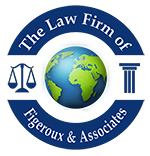By Brian Figeroux, Esq.
Filing for a pardon in New York State (NYS) is a detailed process that requires careful preparation, especially for individuals seeking relief from immigration-related consequences of criminal convictions. This comprehensive guide outlines the steps involved in applying for a pardon in NYS, highlights considerations pertinent to immigration law, and provides a 240-word radio script summarizing the key points. Read more at www.askthelawyer.us. To read the full analysis in our publication, click here, and on our immigration blog, click here.
Understanding Pardons in New York State
A pardon is an act of executive clemency granted by the Governor of New York, offering forgiveness for a conviction and alleviating certain legal consequences. While a pardon does not expunge the conviction, it can restore rights and remove barriers related to employment, housing, and immigration status.
Eligibility Criteria
To be considered for a pardon in NYS, applicants generally must:
- Complete their Sentence: All components of the sentence, including incarceration, probation, parole, fines, and restitution, must be fulfilled.
- Demonstrate Rehabilitation: Evidence of positive behavior post-conviction, such as stable employment, community involvement, and educational achievements, is essential.
- Maintain a Crime-Free Record: A significant period, typically at least 10 years, should have passed since the completion of the sentence without any new convictions.
- Show Specific Need for Relief: Applicants must articulate a compelling reason for seeking a pardon, such as addressing immigration challenges or restoring civil rights.
Application Process
- Obtain the Application Form: The pardon application form is available on the official NYS website.
- Complete the Application: Provide detailed personal information, a comprehensive account of the conviction(s), and a personal statement explaining the reasons for seeking a pardon.
- Gather Supporting Documents: Include at least three character reference letters, employment history, court records, and any other documents that support your rehabilitation and need for a pardon.
- Submit the Application: Mail the completed application and supporting documents to the Executive Clemency Bureau at the address specified on the application form.
Review Process
The Executive Clemency Bureau reviews the application, conducts a thorough investigation, and may contact references. A report is then prepared and submitted to the Governor, who makes the final decision. The process can take several months to a few years, depending on the case’s complexity.
Deadlines and Timing
There are no specific deadlines for submitting a pardon application in NYS; applications are accepted on a rolling basis. However, given the lengthy review process, it’s advisable to apply well in advance, especially if the pardon is needed to address urgent matters such as impending deportation or employment opportunities.
Pardons and Immigration Law
For non-citizens, certain criminal convictions can lead to severe immigration consequences, including deportation. A gubernatorial pardon in NYS can mitigate these effects, particularly for convictions classified as:
- Crimes Involving Moral Turpitude (CIMT): Offenses that gravely violate moral standards, such as theft or fraud.
- Aggravated Felonies: A category under federal immigration law that includes various offenses, not necessarily “aggravated” or “felonies” under state law.
It’s important to note that a state pardon may not prevent deportation for convictions related to controlled substances, firearms, domestic violence, or child abuse. Therefore, understanding the specific immigration implications of the conviction is crucial.
Structuring the Pardon Application for Immigration Purposes
When seeking a pardon to alleviate immigration consequences, consider the following:
- Highlight Immigration Hardships: Clearly explain how the conviction affects your immigration status, including potential deportation, separation from family, or inability to obtain legal residency or citizenship.
- Demonstrate Rehabilitation: Provide substantial evidence of positive contributions to society, such as community service, stable employment, and good moral character.
- Include Support Letters: Obtain letters from community leaders, employers, and family members attesting to your character and the adverse impact of deportation on your family and community.
- Emphasize Urgency: If facing imminent immigration proceedings, indicate the urgency in your application and provide relevant documentation, such as notices from immigration authorities.
Legal Assistance
Navigating the pardon application process, especially with immigration implications, can be complex. Engaging experienced legal counsel can enhance the application’s effectiveness and ensure all legal nuances are addressed. The Law Firm of Figeroux & Associates, located at 26 Court Street, Suite 701, Brooklyn, NY 11242, offers expertise in this area. Contact them at 855-768-8845 or visit www.askthelawyer.us for assistance.
Conclusion
Applying for a pardon in New York State is a meticulous process that requires thorough preparation and a clear demonstration of rehabilitation and need. For non-citizens, a well-structured pardon application can be instrumental in mitigating severe immigration consequences. By adhering to the outlined steps and seeking professional legal guidance, applicants can enhance their prospects of obtaining the desired relief.

